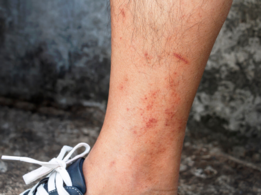Coronavirus prevention: Some COVID-19 patients may not realise their oxygen levels are dangerously depleting, here is why
TIMESOFINDIA.COM | Last updated on - Jun 10, 2020, 17:26 ISTShare fbsharetwsharepinshareComments (0)
01/8Coronavirus prevention: Some COVID-19 patients may not realise their oxygen levels are dangerously depleting, here is why
)

Even as the scientists and medical experts are working day and night to learn more about the highly contagiousSARS-CoV-2 virus, the number of positive coronavirus infections has already crossed the 7 million mark globally. While more than 100 groups are working to develop a successful treatment for COVID-19, as of now, preventive measures and symptomatic treatment remains our best bet against the disease.
02/8The facts
)

According to the World Health Organization, 80 per cent ofcoronavirus infections are mild or asymptomatic, followed by 15 per cent which are severe infection, requiring oxygen and then 5 per cent are critical infections, requiring ventilation. Since asymptomatic and mild infections make up for the major chunk of coronavirus infections, it becomes all the more crucial to carefully monitor any remote discomfort and confusion as well.
03/8The problem with asymptomatic cases
)

When a person contractsCOVID-19, there are chances that he/she may also develop COVID pneumonia which inflames the air sacs in the lungs and they may get filled with fluid or pus. In these cases, patients start feeling breathlessness and struggle to breathe properly. Infact, critical cases of this highly contagious disease typically require oxygen support.
04/8The silent depiction of oxygen levels
)

However, a lot of asymptomatic patients also suffer from extraordinarily low blood-oxygen levels, or hypoxia without even realising. It could be because, in the early stages of the disease, low oxygen saturation doesn’t have any obvious respiratory problems. This silent depletion of oxygen levels in the body of asymptomatic patients may ultimately lead to cardiac arrest.
05/8The need for oximeter
)

Since most asymptomatic patients don’t prohibit any obvious symptoms of low concentration of oxygen levels, it becomes all the more essential to closely monitor the oxygen saturation, in the early stages of the disease. Patients are unaware of the depletion of oxygen as they are able to breathe comfortably. However, they may experience confusion, impaired psychomotor performance and even euphoria, none of which can be clearly linked to oxygen deprivation in the body.
06/8What is pulse oximeter
)

The slow drop in oxygen levels has shed light on the importance of pulse oximeter, which is a small device clipped onto a person’s finger to measure the percentage of oxygen in the blood and the heart rate. Normally, a person’s oxygen saturation (SpO2) is around 94-96 per cent and becomes a cause for concern when it starts dropping below 92 per cent.
Since the patients may gradually become used to the slow concentration of oxygen level in the body, a pulse oximeter can come handy in spotting when oxygen concentrations level starts dropping. This helps in providing the patient with timely oxygen supply before things become critical and even help in early detection of COVID pneumonia when there are minor symptoms.
07/8Should you keep pulse oximeter at home?
)

The signs and symptoms of COVID 19 are evolving and we don’t have any specific vaccine or treatment to curb the spread of the disease. As the WHO data suggests, most of the people infected with the disease may not experience any symptoms at all, which can result in late diagnosis. Hence, keeping a pulse oximeter handy may help in seeking timely help, even if you just feel slightly unwell and have minor symptoms like fever, fatigue etc.
08/8A word of caution
)

However, it is important to note that the moment you develop symptoms or start feeling breathless, it is strongly advisable to consult your doctor instead of relying on a small device. Infact, if you continue getting good oxygen saturation level on the pulse oximeter, it may dissuade you from seeking treatment for other symptoms of COVID. Buying an oximeter might be useful if you are suffering from high blood pressure, diabetes and other chronic lung and heart conditions, which put you in the high-risk category for COVID-19.
Most individuals do not need a pulse oximeter at home unless they feel that have been exposed to the virus or have co-morbidities putting them at high-risk. Even then, the device should be used with a doctor’s guidance to get accurate results and to prevent panic.



















































































closecomments
SIGN IN WITH
FacebookGoogleEmail